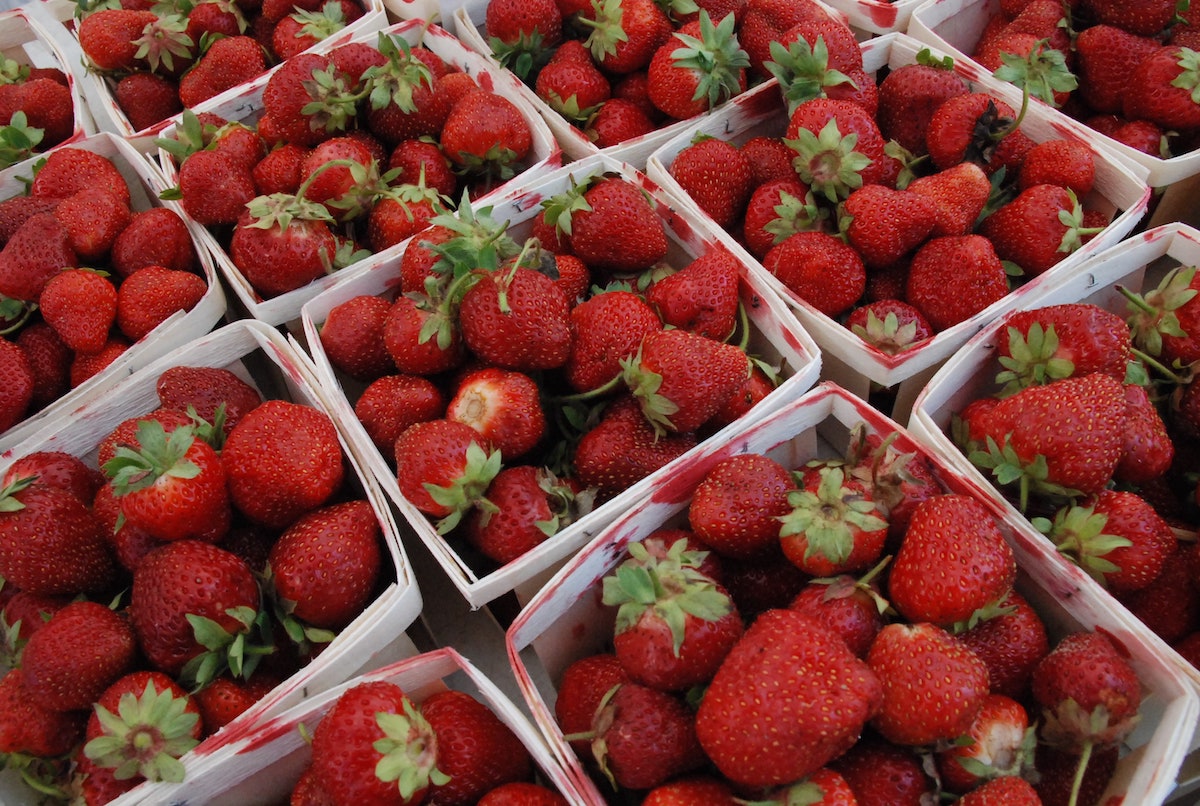
Sarah Moore
Strawberry Patch
First-time gardeners are often leery of investing in strawberry plants when they see them at the farmers market or garden store. The plants, always so small, berryless, and insignificant, seem totally unworthy of their usual $2.99-or-so price tag. In fact, though, strawberries are one of the best deals out there: unlike carrots, which needs constant love and attention, or lettuce, which at the drop of a dime will get bitter and go to seed before you can eat it, the strawberry is a content little creature that keeps on giving.
Strawberries do have a few needs, however. Constant sunlight is one of them, and probably the most important. Strawberries grown in the shade will be small, sour, and just plain disappointing, so take the time to choose a location that is free of significant morning or afternoon shadow. Especially if you are growing other vegetables nearby, check that a tall patch of corn or particularly vigorous pumpkin will not eventually put your babies in the dark.

Also ensure that your strawberries are watered regularly. If you live in a rainy area like the Northwest, you probably will not have to do it very often until June and July. Still, it’s important to keep an eye out for how things are progressing in the bed … any sign of yellowing or browning on the leaves is definitely bad. The best way to keep strawberries happy is, like a tropical houseplant, to make sure the soil is always at least somewhat moist beneath the surface.
On a related note, strawberries like good drainage and suffer under marshy conditions. Amend your soil with some good compost, and break up clumps so that it’s fluffy instead of dense. If your yard is heavy in clay, then mound your strawberry patches to facilitate runoff, or build yourself a simple four-sided raised bed and fill it with store-bought soil mixed with compost.
Lastly, strawberries like lots and lots of space. In addition to producing more fruit than you’d think such little plants capable of, they also reproduce at an astonishing rate. Their quick growth means that later in the season – late summer to early fall – you will begin to notice little offshoots rooting into the soil around the main plants. These are called runners, and will turn into their own mother plants next year, given the room. Believe it or not, in two years a well-tended strawberry patch can as much as quadruple!
What’s not to like, right? Yet, perhaps because they fetch such a premium at the farmers market and natural food stores, I find that novice gardeners generally assume berries of any kind must be extremely difficult. But if tomatoes and peas don’t alarm you (or even if they do!), there’s nothing to worry about with the humble strawberry. Its needs are simple, and daily maintenance is but the work of minutes. If you move, no worries: they love being transplanted. So take a deep breath, invest, and reap the benefits.



Leave a Reply